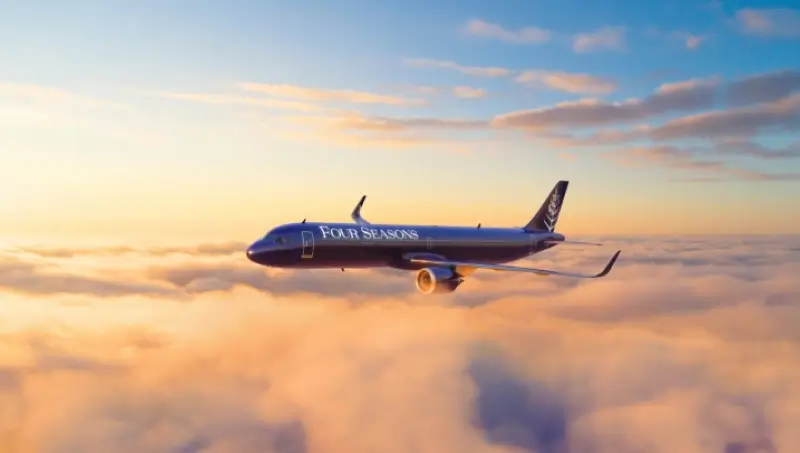
More than 65 per cent of airlines in South East Asia are not IOSA safety audited
Oct 16, 2013

In South East Asia, a significant concern arises from the fact that over 65 percent of airlines have not undergone the International Air Transport Association's Operational Safety Audit (IOSA). This lack of compliance raises questions about safety standards and operational practices within the region's aviation sector. IOSA is a comprehensive evaluation system that assesses an airline's operational management and control systems, ensuring they meet international safety regulations. The absence of such audits among a majority of carriers could potentially compromise passenger safety and undermine confidence in air travel within South East Asia, highlighting the need for stricter adherence to safety protocols.
Understanding IOSA Safety Audits
The International Air Transport Association (IATA) Operational Safety Audit (IOSA) is a crucial evaluation system designed to assess the operational management and control systems of airlines. It is a globally recognized standard that ensures airlines meet rigorous safety and operational benchmarks. However, recent statistics reveal a concerning trend in South East Asia, where more than 65 per cent of airlines are not IOSA safety audited. This raises significant questions about the safety standards in the region's aviation sector.
The Current State of Airline Safety in South East Asia
As the aviation market in South East Asia continues to expand rapidly, the need for stringent safety measures becomes increasingly imperative. Despite the growing number of airlines in the region, a staggering majority have not undergone IOSA safety audits. This situation highlights a potential gap in safety practices, which could pose risks to passengers and the aviation industry as a whole.
Importance of IOSA Safety Audits
IOSA safety audits serve as a benchmark for operational safety and efficiency in the airline industry. Airlines that successfully complete the IOSA audit demonstrate their commitment to maintaining high safety standards. The audit covers various aspects, including:
- Organizational structure
- Flight operations
- Engineering and maintenance
- Ground handling
- Passenger service
By adhering to these standards, airlines not only enhance their safety protocols but also build trust with passengers, regulators, and industry stakeholders. The absence of IOSA accreditation raises concerns about the operational practices of airlines that are not audited.
Risks Associated with Non-IOSA Audited Airlines
Airlines that do not undergo IOSA safety audits may face a multitude of risks, including:
- Increased Accident Rates: With less stringent safety protocols, the likelihood of accidents may rise, endangering passengers and crew.
- Loss of Customer Confidence: Passengers are more likely to choose airlines that are IOSA certified, as this provides assurance of safety and reliability.
- Regulatory Scrutiny: Governments and aviation authorities may impose stricter regulations on non-certified airlines, impacting their operations and profitability.
Chart: IOSA Audit Status of South East Asian Airlines
The following table illustrates the percentage of airlines in South East Asia that are IOSA safety audited versus those that are not:
| Airline Status | Percentage |
|---|---|
| IOSA Audited | 35% |
| Not IOSA Audited | 65% |
Challenges Faced by Airlines in Achieving IOSA Certification
Several factors contribute to the reluctance of airlines in South East Asia to pursue IOSA certification:
- Cost Implications: The financial burden associated with the IOSA audit process can deter smaller airlines from seeking certification.
- Resource Limitations: Many airlines may lack the necessary resources and infrastructure to meet IOSA's comprehensive requirements.
- Lack of Awareness: Some airlines may not fully understand the benefits of IOSA certification, leading to a lack of motivation to pursue it.
The Path Forward: Enhancing Safety Standards
To improve the safety landscape in South East Asia, several initiatives can be undertaken:
- Government Incentives: Governments can offer financial incentives or subsidies to encourage airlines to pursue IOSA certification.
- Awareness Campaigns: Increasing awareness about the benefits of IOSA certification can motivate airlines to prioritize safety audits.
- Collaboration with IATA: Airlines can collaborate with IATA to access resources and support during the IOSA audit process.
Conclusion
The fact that more than 65 per cent of airlines in South East Asia are not IOSA safety audited is a significant concern that cannot be overlooked. Ensuring the safety of passengers should be the top priority for all airlines, and achieving IOSA certification is a vital step in that direction. By addressing the challenges faced by airlines and promoting a culture of safety, the aviation industry in South East Asia can work towards a future where all airlines meet the highest standards of operational safety.
Related Articles

Explore Thailand: The Best Islands to Visit for Paradise, Adventure, and Relaxation

The Ultimate Guide to the Best Islands in Thailand for Your Next Getaway

Do babies need passports? How to get a passport for a newborn

How to get a U.S. passport fast: here’s how to expedite the process

What is Mobile Passport Control: 5 reasons why you should use it

SENTRI vs. Global Entry: A detailed guide

Do you need a passport to go to the Bahamas? Let’s find out

Do you need a passport to go to Mexico? A detailed guide

Do you need a passport to go to Canada? We got the answer

Do You Need a Passport for a Cruise: An Essential Travel Guide

Booster Seat Requirements: All the Rules to Follow in Your Rental Car

What Are the World’s Most Powerful Passports, and How Does Yours Rank?

How to Take a Passport Photo at Home: A Helpful Guide

You've got to have heart! Southwest's new livery

Your opinion: Should water be free on low cost carriers?

Young women bolder than guys as solo travellers
